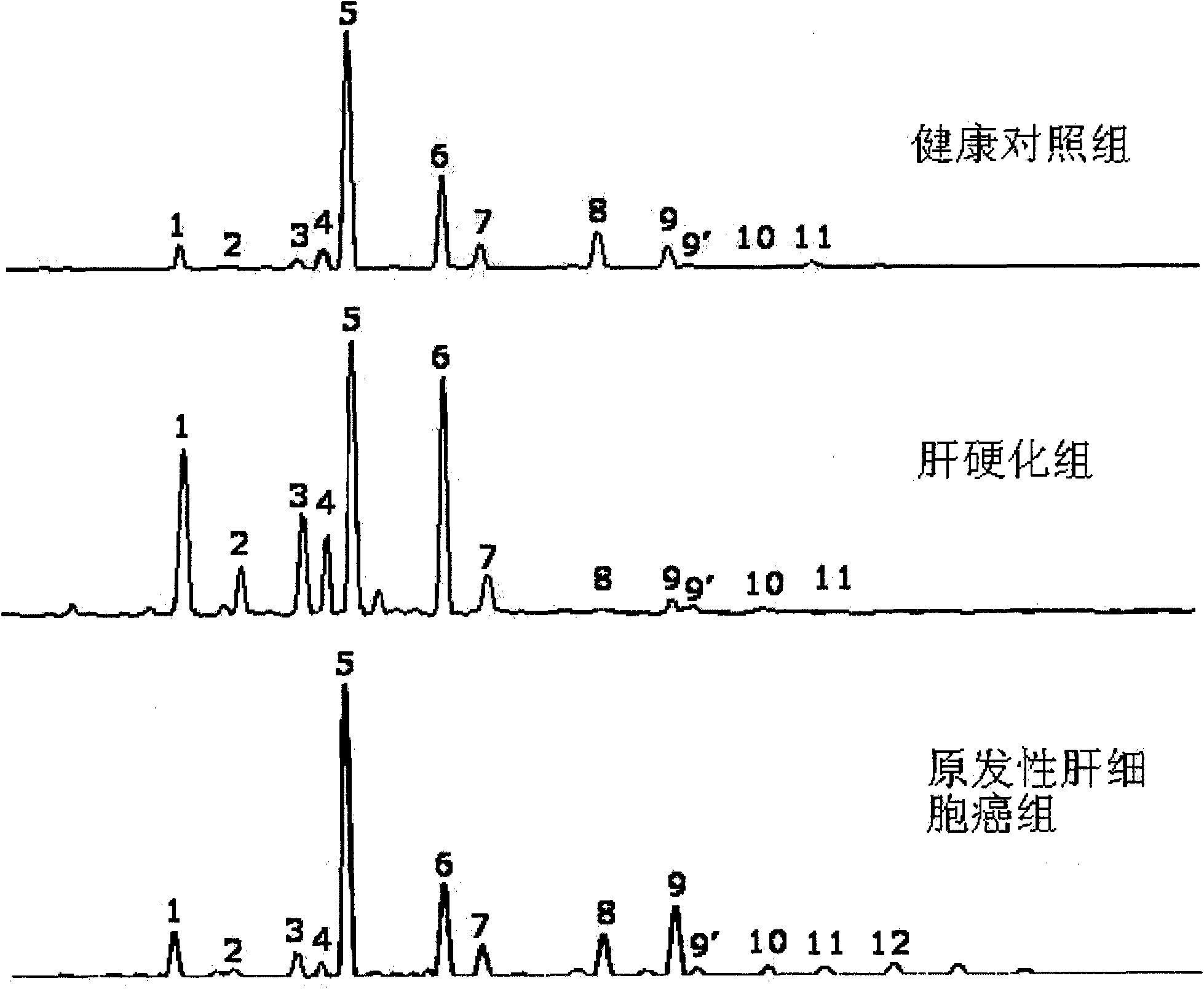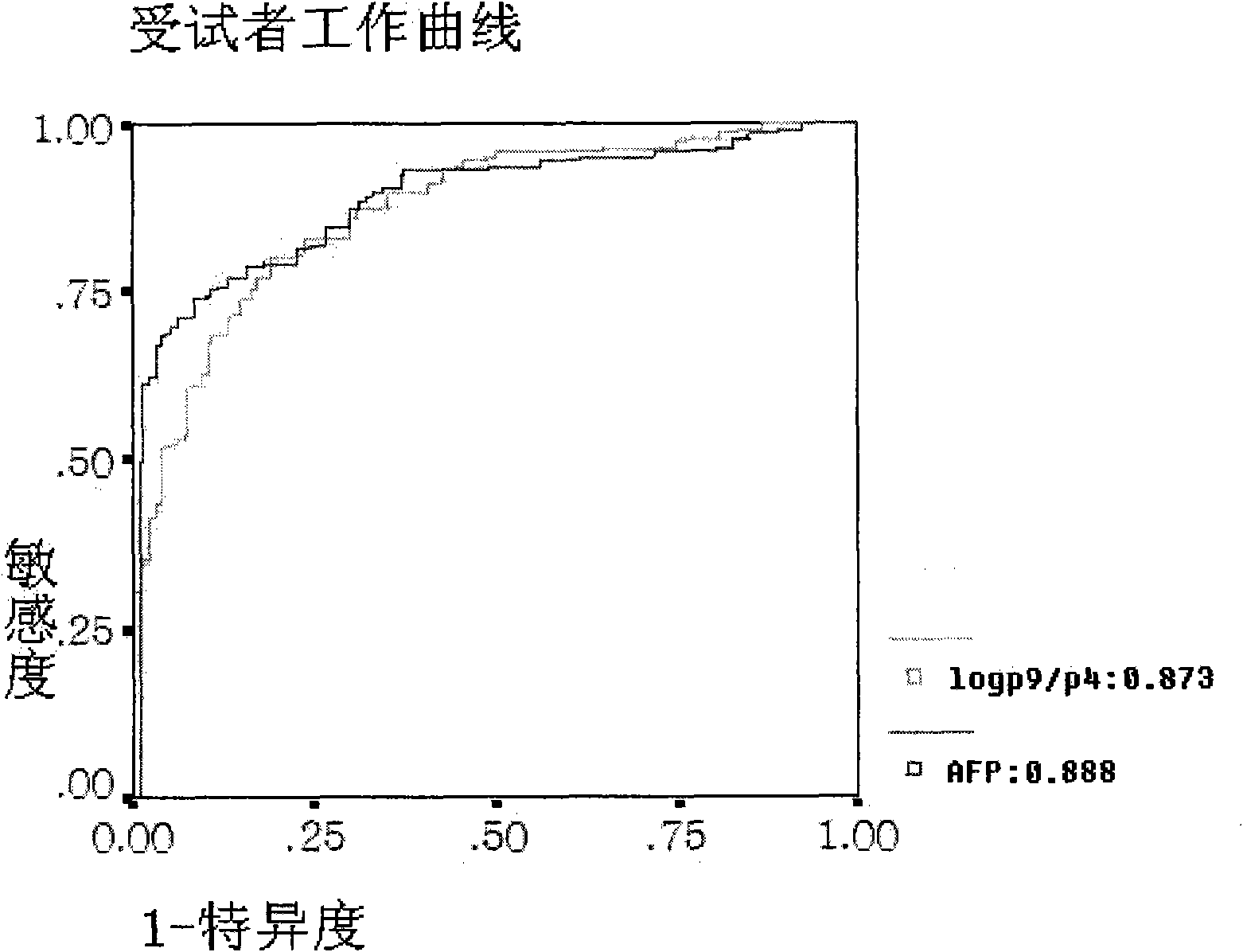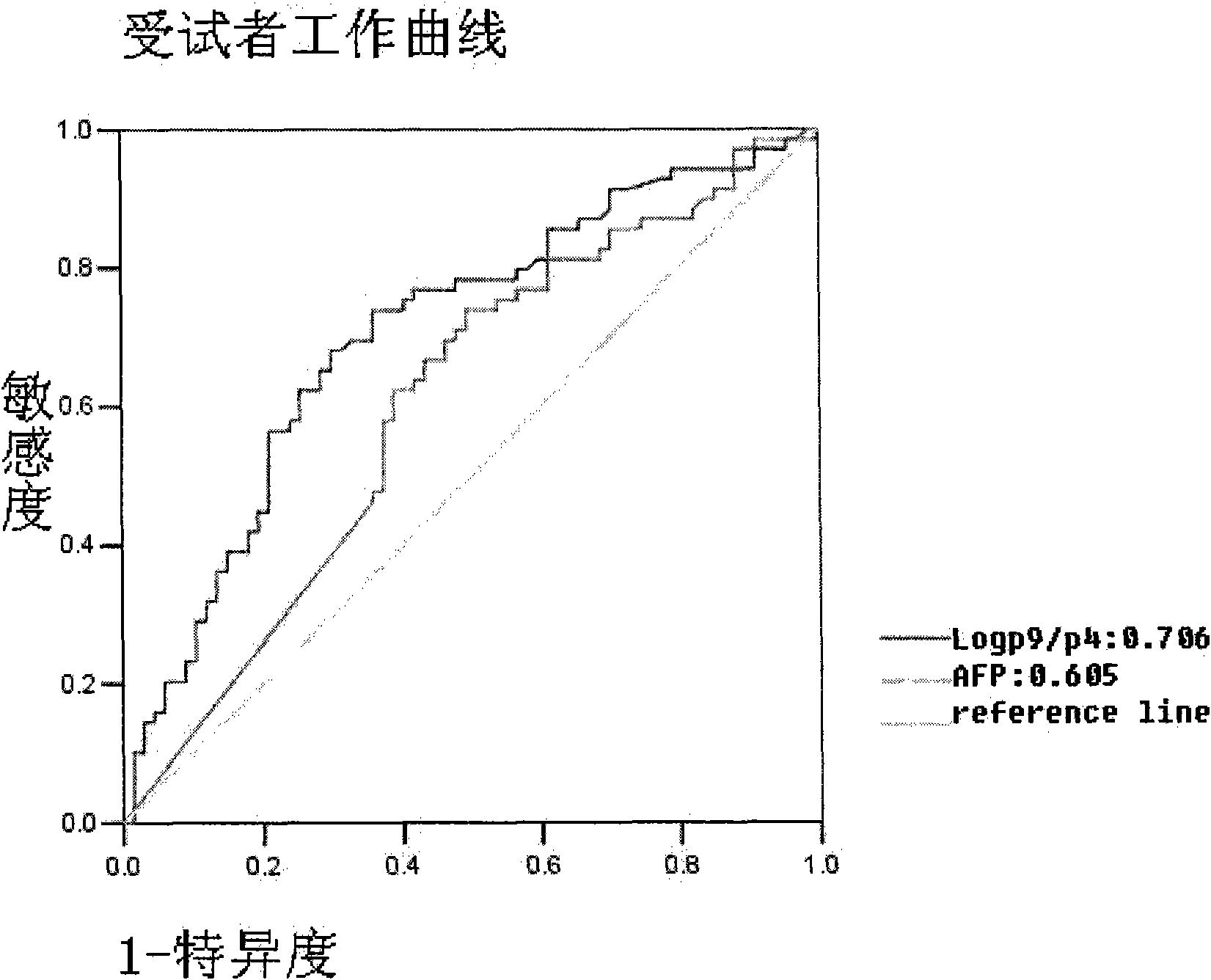Method for detecting N-glycome log (P9/P4) in serum and detecting system and application thereof
A detection system, serum technology, applied in the field of clinical medical diagnostics, can solve problems such as adoption
- Summary
- Abstract
- Description
- Claims
- Application Information
AI Technical Summary
Problems solved by technology
Method used
Image
Examples
Embodiment 1
[0030] Example 1: Analysis of N-glycan groups in the normal control group, liver fibrosis group and HCC patient group Collected primary liver cells from January 2007 to April 2008 in Dongfang Hepatobiliary Surgery Hospital Affiliated to Second Military Medical University The serum of 145 patients with cancer. Serum samples from 128 patients with liver fibrosis in Renji Hospital of Shanghai Jiaotong University were collected during the same period. All the above patients met the following inclusion criteria: ①all HCC patients with HBV infection; ②Patients’ postoperative pathological specimens were all diagnosed as HCC patients or patients with liver fibrosis by pathologists; ③Human immunodeficiency virus (human immunodeficiency virus, HIV) was excluded , hepatitis C virus (HCV), hepatitis D virus (HDV), hepatitis E virus HEV, and syphilis other than hepatitis B virus infection; ④ Autoimmune liver disease, alcoholic liver disease, drug-induced liver disease, and Wilson disease ...
Embodiment 2
[0059] Embodiment 2: Detect patient's serum N sugar log (P9 / P4)
[0060] Specific experimental steps:
[0061] 1) Blood was drawn from patients 1, 2, 3 and 4, and serum was collected.
[0062] 2) Oligosaccharide release: 2 μl serum + 2 μl buffer solution (10 mM NH4HCO3, 5% SDS) + 3 μl water; heat at 95°C for 5 minutes, place at 4°C for 15 minutes; add 3 μl PNGaseF (2.2U / μl); incubate at 37°C for 3 Hours, cool at 4°C; add 100 μl of water, mark tube D.
[0063] 3) Labeling of oligosaccharides: take 20 μl (solution in tube D), dry at 60°C for 3 hours; add 2 μl of labeling solution (20mM APTS:1M NaCNBH3=1:1); incubate at 37°C for 16 hours; add 200μl of water to terminate the reaction, Marked as L tube.
[0064] 4) Oligosaccharide desialic acid: 2 μl (L tube solution) + 3 μl desialidase (2 mU); incubate overnight at 37°C; shake and mix with 35 μl water, and mark it as a DE tube.
[0065] 5) Detection and analysis: 10 μl (DE tube solution) was used for fragment analysis with an ...
PUM
 Login to View More
Login to View More Abstract
Description
Claims
Application Information
 Login to View More
Login to View More - R&D
- Intellectual Property
- Life Sciences
- Materials
- Tech Scout
- Unparalleled Data Quality
- Higher Quality Content
- 60% Fewer Hallucinations
Browse by: Latest US Patents, China's latest patents, Technical Efficacy Thesaurus, Application Domain, Technology Topic, Popular Technical Reports.
© 2025 PatSnap. All rights reserved.Legal|Privacy policy|Modern Slavery Act Transparency Statement|Sitemap|About US| Contact US: help@patsnap.com



